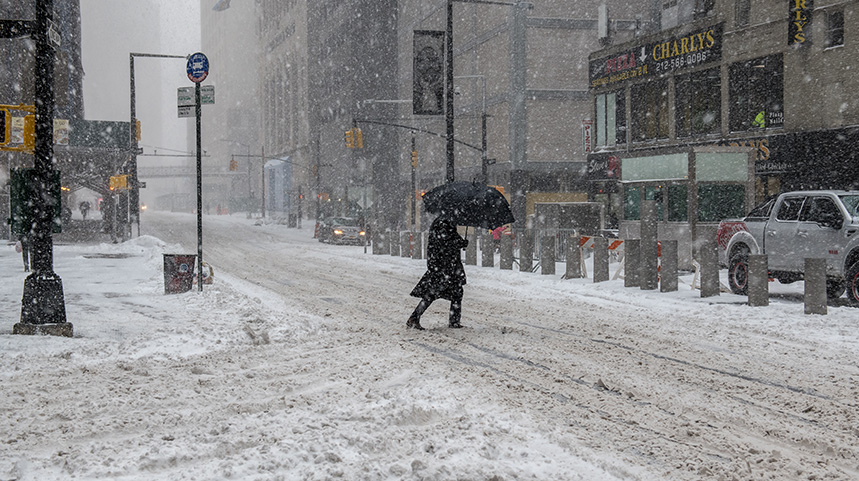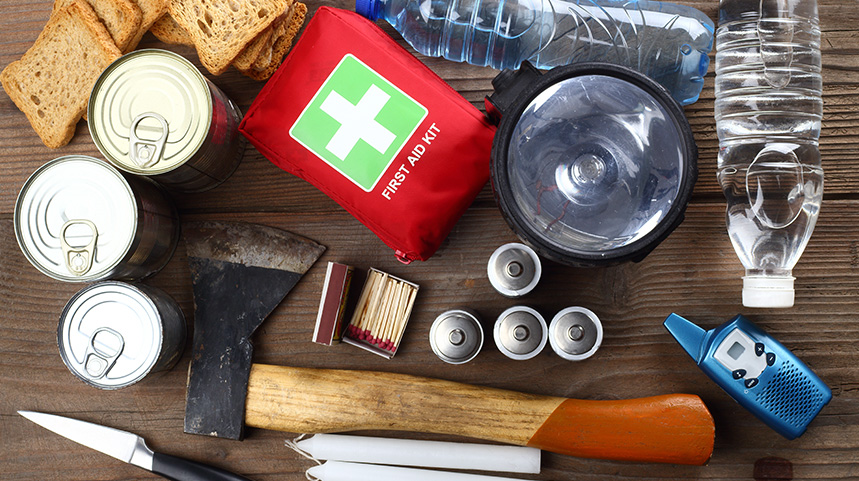Much like the ever-popular “polar vortex,” it’s become increasingly common to refer to a specific type of super-storm as a “bomb cyclone.” Well, that sounds bad, doesn’t it? Don’t worry — there’s nothing exploding or detonating here.
As it turns out, “bomb cyclone” is something of a misnomer, a shortcut for popular scientists and meteorologists to shorten meteorology-speak for the formation of a type of storm. The phrase combines the word “bomb,” used by meteorologists dating back to the 1940s to describe particularly ferocious storms, with the scientific process known better as “cyclogenesis,” which refers to the development of cyclonic circulation in the atmosphere. A “bomb” is an old meteorological term for a low-pressure system outside the tropics. The term is also misused a lot in North America, where people use the term to describe a nor’easter or even just heavy snow.

Just like a normal cyclone, a bomb derives its energy from variations in temperature between the warmer temperatures towards the Equator and cooler temperatures towards the poles. Storm intensity is measured by central pressure; the lower the pressure, the stronger the storm. Bomb cyclones tend to occur when a strong jet stream high in the atmosphere interacts with an existing low-pressure system near a warm ocean current. The jet stream pulls air out of the storm’s rising column of air, causing the surface low to deepen. The identifying characteristic of a bomb cyclone is a drop in pressure of 24 millibars or less in 24 hours, although this varies slightly with latitude.
The four most active regions where bomb cyclones occur in the world are the Northwest Pacific, the North Atlantic, the Southwest Pacific, and South Atlantic. During the cooler months, the east coasts of continents offer the perfect meteorological conditions for cyclogenesis.
Scientific research suggests that bomb cyclones will move closer to the poles over time, although this could make storms more intense on America’s east coast. However, even if bombs get less frequent, higher sea levels and increasing atmospheric moisture can potentially worsen their impacts in the future. Worldwide, between 40 and 70 bomb cyclones develop each year, but most are over open ocean and don’t draw much interest from the general public, although meteorologists still take them into account.
Just recently, in January of 2018, a bomb cyclone caused havoc with historic blizzard conditions from coastal Virginia to New England. Other notable storms include the 1993 Superstorm, sometimes called the “Storm of the Century,” which dumped record snow in March of that year; A February 2017 snowstorm that impacted the Northeast; and a storm that bombed out over the Great Lakes in November 1913, earning the nickname “The White Hurricane.”

If a bomb cyclone threatens your community, be sure to take the proper steps to prepare. These steps may include stockpiling at least three days of food, water, and other necessary provisions, as power may be down for days due to strong winds and ice-laden branches knocking down power lines. If roads become snow-covered or flooded, stay off them until they are plowed or flooding subsides. It is best to stay home or shelter in place until the storm passes. Conditions can change quickly during these fast-moving storms and you don’t want to be stranded on an unsafe road, unable to get home.
After a bomb cyclone or other dangerous storm blows through your community, you may want to consider bringing in professionals to properly secure, clean, assess, and repair your home. The water damage restoration company will initially assess the degree of damage resulting from the nor’easter, and recommend needed repairs.